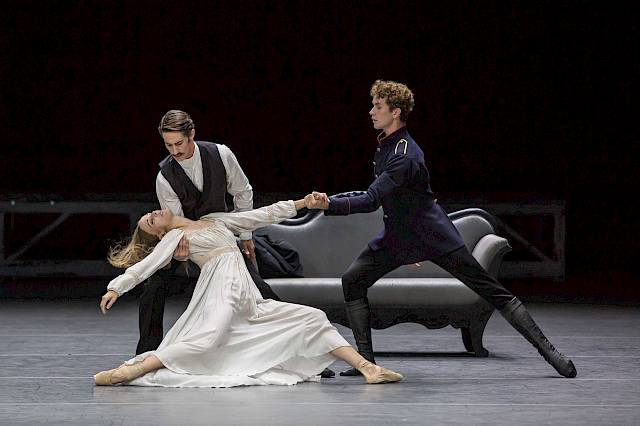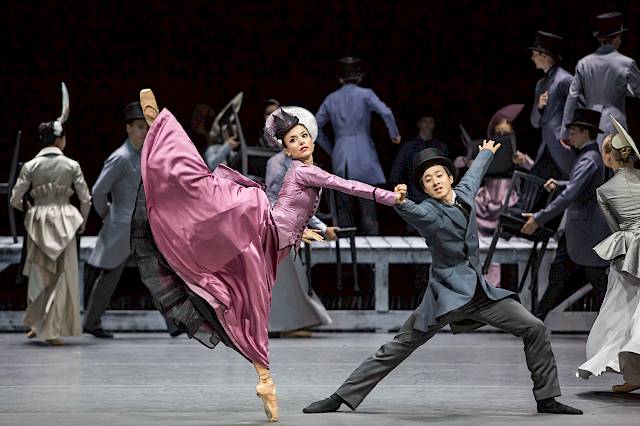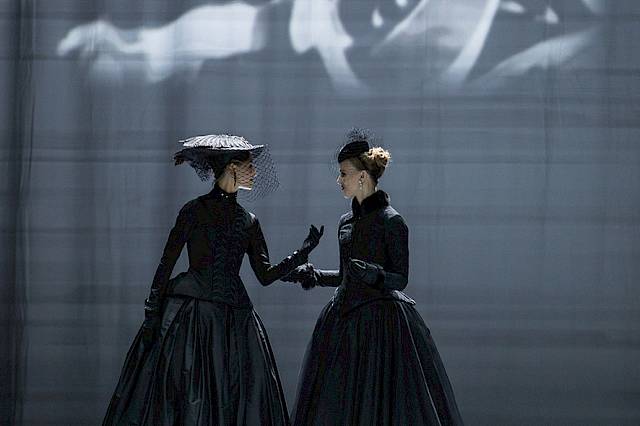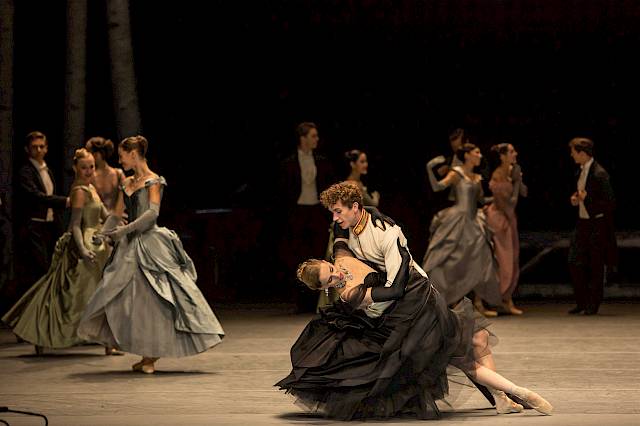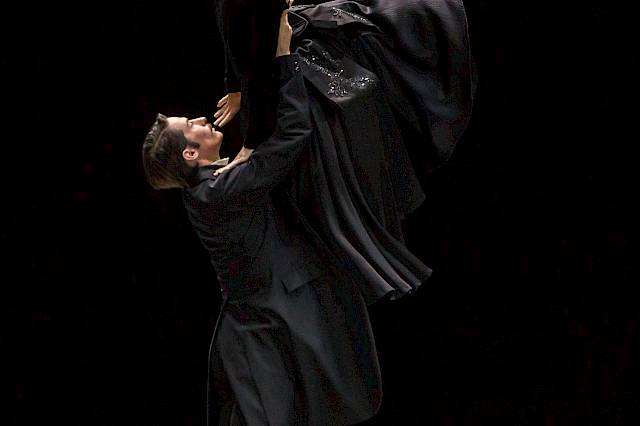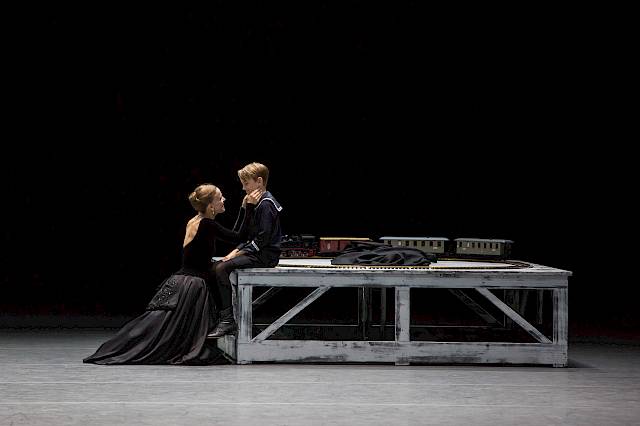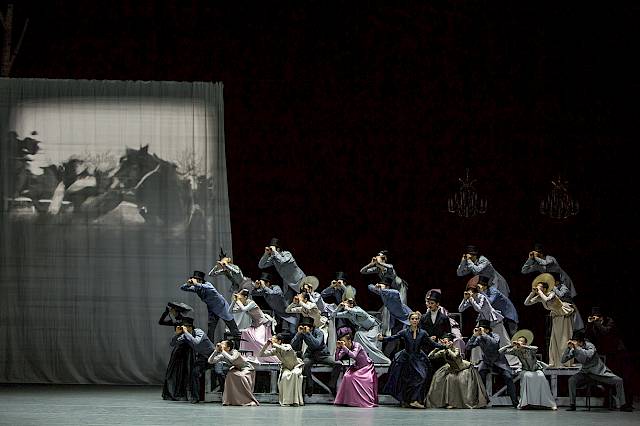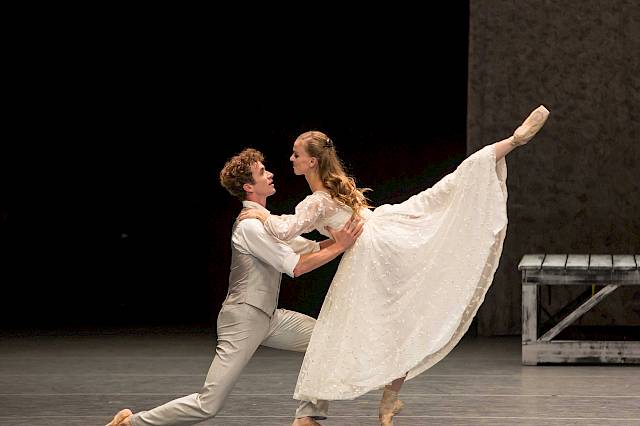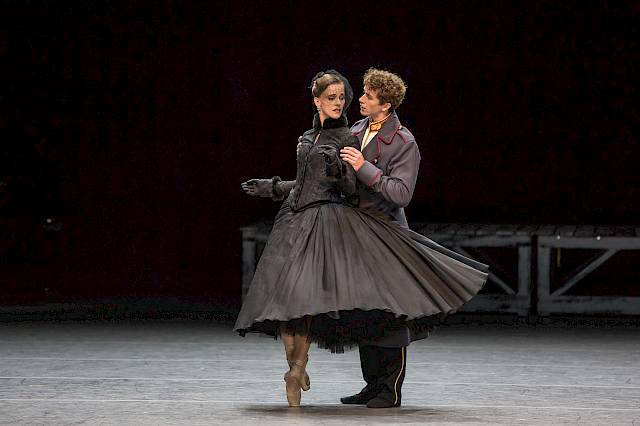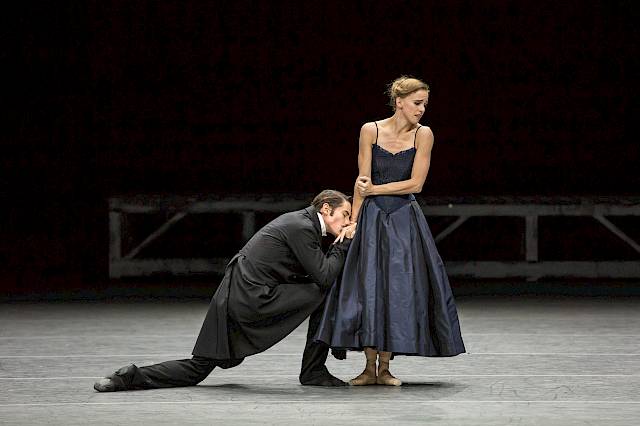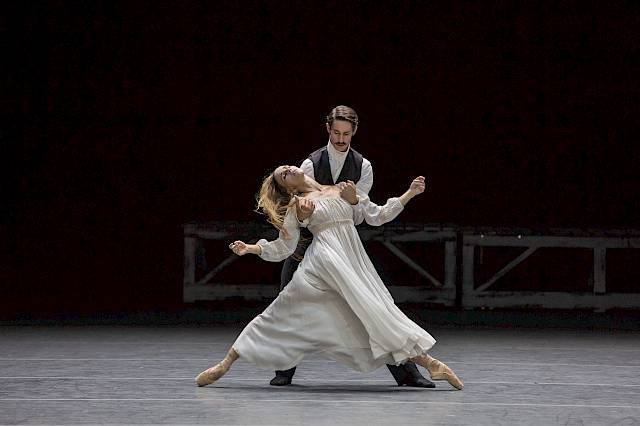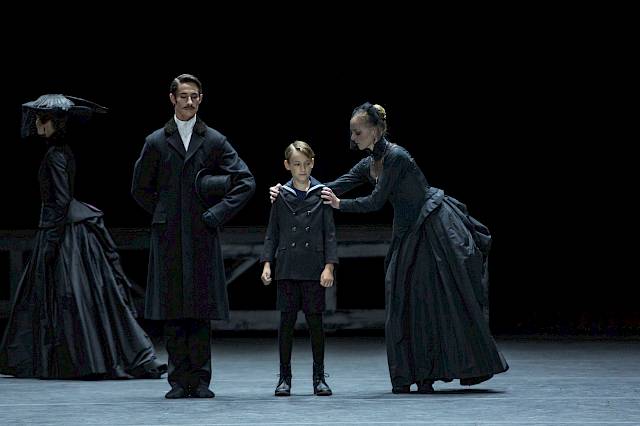Anna Karenina
Ballet by Christian Spuck
After the eponymous novel by Leo Tolstoy (1828-1910)
Music by Sergei Rachmaninoff, Witold Lutosławski, Sulkhan Tsintsadze and Josef Bardanashvili
Duration 2 H. 10 Min. incl. intermission after 1st part after approx. 1 H. Introduction 45 min before the performance.
A co-production with Den Norske Opera & Ballett / Nasjonalballetten, Oslo.
Past performances
September 2016
January 2017
February 2017
March 2017
June 2017
July 2017
Good to know
Anna Karenina
Abstract
Anna Karenina
The beautiful Anna Karenina is living in a joyless marriage with an austere, highly respected government official in St. Petersburg. When Anna encounters the happy-go-lucky officer Count Vronsky, she falls in love with him at first sight, but is initially reluctant to embark on an affair. Vronsky woos her until she becomes his secret lover. The amour fou doesn’t remain a secret for long, and society ostracises the adulteress. Anna, caught between her moral duty as a wife and love, is in despair. The catastrophe takes its course. With Anna Karenina, Leo Tolstoy wrote a novel of world stature. He not only tells the story of a love affair that founders due to prevailing moral attitudes, but also presents a subtle, panoramic view of Russian society in the late 19th century. In Tolstoy’s opulent portrayal of social mores, the upright landowner Levin and Kitty, the daughter of a St. Petersburg prince, are the antithesis of Anna and Vronsky. Their relationship is not dominated by passion, but by a sense of responsibility, sincerity and tenderness, and finds its fulfilment in a contented life in the country.
Christian Spuck has adapted this demanding novel as a ballet, and in so doing has thrilled not only audiences in Zurich, but also in Oslo. His interpretation of Anna Karenina is even soon to be premiered in Moscow. Christian Spuck focuses on the fate of the heroine, but also explores the way of life of the other principal characters. To the accompaniment of symphonic and chamber music by Sergei Rachmaninoff and Witold Lutoslawski, he translates the fate of Tolstoy’s protagonists into vivid choreographic images.
Anna Karenina
Synopsis
Anna Karenina
Prologue
Martin Donner: Trains I
Sergei Rachmaninoff: Moment musical op. 16 no. 3 B minor
Salon I
Stiva Oblonski is cheating on his wife Dolly with the female maids. Kitty Shcherbatskaya is being pursued by landowner Konstantin Levin, who has come to town specifically for this purpose.
Sergei Rachmaninoff: Symphonic Dances op. 45,
2. Andante con moto (Tempo di Valse)
Arrival in Moscow
Anna Karenina has come to Moscow from St. Petersburg where she intends to mediate between Stiva and Dolly. Stiva is waiting for Anna on the platform, while her travelling acquaintance, Countess Vronskaya, is being collected by her son Alexei. Anna Karenina and Alexei Vronsky are introduced to one another, and this first sighting remains unforgettable for both.
Witold Lutosławski: Novelette for Orchestra, No. 1 Announcement
The ball
Levin asks for Kitty’s hand in marriage and she turns him down. She is infatuated with Vronsky, and is hoping he will propose to her. However, Vronsky’s only desire is to see Anna Karenina again at the ball. When Anna appears and Vronsky only has eyes for her, Kitty’s world falls apart. Anna realises that she is the reason for Kitty’s destroyed hopes and leaves.
Sergei Rachmaninoff:
Symphonic Dances op. 45, 2. Andante con moto (Tempo di Valse)
To St. Petersburg
Vronsky follows Anna to St. Petersburg. They become closer during the journey. In St. Petersburg, Anna Karenina is collected by her husband Alexei and their son Seryozha.
Sergei Rachmaninoff: Rhapsody on a Theme of Paganini op. 43 for piano and orchestra, Variation 12 Martin Donner: Trains II
In the country I
After his refused proposal, Levin flees to the solitude of his estate and avoids society.
Sergei Rachmaninoff (Arr.: Christophe Barwinek):
Noch' pechal'na, op. 26 No. 12 (The Night is Sad)
Betsy’s salon
The salon of Betsy Tverskaya, a friend of Anna’s, is the meeting point of the decadent Petersburg society. While Dolly and Stiva continue to argue here, Anna and Vronsky enjoy their reunion. When Karenin turns up to collect his wife, she refuses to go home with him. The Karenins are the subject of much discussion in the salon: A shadow has been cast over Anna’s reputation – Vronsky.
As society becomes more distant, Anna and Vronsky’s passion for one another can no longer be assuaged. Vronsky’s love allows Anna to forget the feelings of guilt and shame about the breakdown of her marriage.
Sergei Rachmaninoff: Piano Concert no. 2 c-minor op. 18, 3rd movement
Witold Lutosławski: Chain 3 for Orchestra, III. 38
Horse racing
The distinguished society meets at a horse race, including the Karenins, the Oblonskis, Betsy and Countess Vronskaya. The fact that Anna screams when Vronsky falls with his horse is proof of her unfaithfulness for Karenin and those present. Karenin demands the fulfilment of marital obligations from Anna.
Sergei Rachmaninoff: Rhapsody on a Theme of Paganini op. 43,
Variations no. 8 and no. 9
Witold Lutosławski: Piano concert, 2nd movement
In the country II
Levin takes part in haymaking, forgets his heartache and finds new meaning in life in the shared work with his farmers.
The transformed Kitty comes to the country, and she and Levin become closer to one another.
Martin Donner: Sensen
Sergei Rachmaninoff (Arr.: Christophe Barwinek):
Ne poy, krasavitsa! op. 4 no. 4 (Don’t sing, beautiful)
At the home of the Karenins
After the birth of Vronsky’s daughter, Anna is under threat of death. This situation causes Karenin to forgive her and his love rival. Vronsky, who fears that Anna will return to her husband, attempts suicide.
Sergei Rachmaninoff (Arr.: Christophe Barwinek):
Rhapsody on a Theme of Paganini op. 43, Variation 17
Witold Lutosławski: Piano Concert, 1st Movement
Break
Prelude:
Witold Lutosławski: Novelette for Orchestras, no. 1 Announcement
Italy/Russia
Vronsky is in Italy with Anna. She has left her old life behind - including Seryozha. Vronsky has given up his career in the military for her. They enjoy their abundance of happiness as a pair, but soon Anna misses her son, while Vronsky misses life in society. They return to Russia. Dolly appears to have come to terms with remaining at the side of the notoriously unfaithful Stiva.
Sergei Rachmaninoff: Piano Concert no. 2 c minor op. 18, 2nd Movement
Wedding
Kitty and Levin have come together and marry.
Sulkhan Tsintsadze (Arr.: Christophe Barwinek):
Miniatures for String Quartet, 5th harmony
Seryozha’s birthday
In secret, Anna visits her son Seryozha, who is now being looked after by the confidante of the Karenins, Lidia Ivanovna. They both bring the reunion of mother and son to an abrupt end. Anna and Karenin have a heated discussion, after which Anna remains alone and shattered.
Sergei Rachmaninoff: Prelude C-sharp minor op. 3 no. 2
Loneliness I
Anna is devastated. She now doubts Vronsky’s faithfulness and tries to numb her pain and jealousy with opium.
Sergei Rachmaninoff (Arr.: Christophe Barwinek):
Uvyal tsvetok o. op. (The flower is withered; Text page 74)
Isolation
While Vronsky is able to continue to take part in public life, Anna is perceived as an adulteress and is shunned by and cut off from society. Even her once friend Betsy turns away from her. Her jealousy and delusions turn obsessive, and she suspects that Princess Sorokina, who Countess Vronskaya has chosen for her son, is a love rival.
Witold Lutosławski: Novelette for Orchestra, No. 2 First Event
Witold Lutosławski: Novelette for Orchestra, No. 1 Announcement
Sergei Rachmaninoff: Prelude F-sharp minor op. 23 No.1
Loneliness ll/Anna’s death
All relationships and ties have dissolved for Anna, and Vronsky is also no longer a reason for her to stop. She kills herself.
Josef Bardanashvili: Concerto quasi una fantasia, 2. Sostenuto
Sergei Rachmaninoff: Ne poy, krasavitsa! op. 4 No. 4 (Prelude)
Biographies
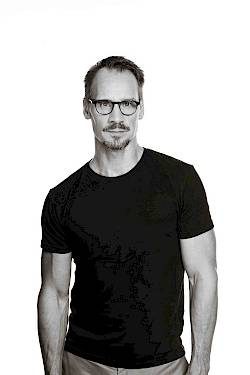
Christian Spuck,
Christian Spuck
Christian Spuck stammt aus Marburg und wurde an der John Cranko Schule in Stuttgart ausgebildet. Seine tänzerische Laufbahn begann er in Jan Lauwers’ Needcompany und Anne Teresa de Keersmaekers Ensemble «Rosas». 1995 wurde er Mitglied des Stuttgarter Balletts und war von 2001 bis 2012 Hauschoreograf der Compagnie. In Stuttgart kreierte er fünfzehn Uraufführungen, darunter die Handlungsballette Lulu. Eine Monstretragödie nach Frank Wedekind, Der Sandmann und Das Fräulein von S. nach E.T.A. Hoffmann. Darüber hinaus hat Christian Spuck mit zahlreichen namhaften Ballettcompagnien in Europa und den USA gearbeitet. Für das Königliche Ballett Flandern entstand 2006 The Return of Ulysses, beim Norwegischen Nationalballett Oslo wurde Woyzeck nach Georg Büchner uraufgeführt. Das Ballett Die Kinder beim Aalto Ballett Essen wurde für den «Prix Benois de la Danse» nominiert, das ebenfalls in Essen uraufgeführte Ballett Leonce und Lena nach Georg Büchner wurde von den Grands Ballets Canadiens de Montréal, dem Charlotte Ballet, USA, dem Tschechischen Nationalballett Prag und vom Stuttgarter Ballett übernommen. Die Uraufführung von Poppea//Poppea für Gauthier Dance am Theaterhaus Stuttgart wurde 2010 von der Zeitschrift «Dance Europe» zu den zehn erfolgreichsten Tanzproduktionen weltweit gewählt sowie mit dem deutschen Theaterpreis Der Faust 2011 und dem italienischen «Danza/Danza-Award» ausgezeichnet. Christian Spuck hat auch Opern inszeniert: Auf Glucks Orphée et Euridice an der Staatsoper Stuttgart folgten Verdis Falstaff am Staatstheater Wiesbaden sowie Berlioz’ La Damnation de Faust und Wagners Fliegender Holländer an der Deutschen Oper Berlin. Von 2012 bis 2023 war Christian Spuck Direktor des Balletts Zürich. Hier waren seine Choreografien Romeo und Julia, Leonce und Lena, Woyzeck, Der Sandmann, Messa da Requiem, Nussknacker und Mausekönig, Dornröschen und Monteverdi zu sehen. Das 2014 in Zürich uraufgeführte Ballett Anna Karenina nach Lew Tolstoi wurde in Oslo, am Moskauer Stanislawski-Theater, vom Koreanischen Nationalballett und vom Bayerischen Staatsballett ins Repertoire übernommen. 2018 hatte in Zürich Spucks Ballett Winterreise Premiere, für das er mit dem «Prix Benois de la Danse 2019» ausgezeichnet wurde. 2019 folgte beim Ballett Zürich Helmut Lachenmanns Das Mädchen mit den Schwefelhölzern (Auszeichnung als «Produktion des Jahres und Kompanie des Jahres für das Ballett Zürich durch die Zeitschrift tanz). Für das Moskauer Bolschoitheater kreierte er 2021 sein Ballett Orlando nach Virginia Woolf. Spucks Messa da Requiem wurde nicht nur zum Adelaide Festival nach Australien eingeladen, sondern auch vom Het Nationale Oper & Ballet Amsterdam und vom Finnischen Nationalballett übernommen. Seit Beginn der Saison 2023/24 ist Christian Spuck Intendant des Staatsballetts Berlin.
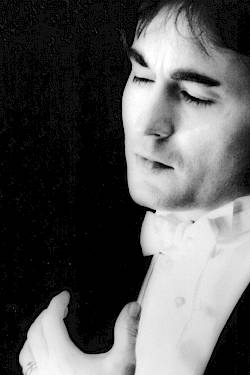
Paul Connelly,
Paul Connelly
Paul Connelly debütierte 23-jährig als Dirigent mit Gershwins Porgy and Bess im Rahmen einer Tournee der Houston Grand Opera. 1980 wurde er auf Einladung von Michail Baryshnikov Erster Kapellmeister des American Ballet Theatre und arbeitete dort mit Choreografen wie Jerome Robbins, George Balanchine und Anthony Tudor. Während dieser Zeit dirigierte er auch Vorstellungen des New York City Ballet sowie Gala-Veranstaltungen wie Nureyev and Friends und Baryshnikov and Co., ausserdem war er Gastdirigent beim National Ballet of Canada. Während der Zeit beim ABT war er an zahlreichen Film- und Fernsehprojekten beteiligt (u.a. Don Quixote). Zu seinen Opernaktivitäten in dieser Zeit gehören Brittens Death in Venice, Debussys Pelléas et Mélisande sowie Purcells Dido and Aeneas. Nach der musikalischen Leitung einer Ballettgala an der Wiener Staatsoper wurde ihm dort Rossinis Barbiere di Siviglia anvertraut, ein Erfolg, der den Anfang einer intensiven Dirigententätigkeit in Europa markiert. Einladungen führten ihn zum Staatsballett Berlin, das Ballett der Opéra Paris (Verfilmungen von Neumeiers Sylvia, Balanchines Jewels, Giselle, Roland-Petit-Abend), zum Orchestre Colonne in Paris, an das Opernhaus Nizza, ans Teatro di San Carlo in Neapel, an die Oper Oslo, zum Royal Ballet in London und in Birmingham, zum Het Nationale Ballet in Amsterdam, zum Tokyo Ballet, zum Semperoper Ballett Dresden und an die Mailänder Scala, wo er auf Einladung von Riccardo Muti die Opern Il turco in Italia, Die Zauberflöte und Don Giovanni dirigierte. An der Scala leitete er auch eine Reihe von Ballettaufführungen, unter anderem Giselle, die auch verfilmt wurde. Auf DVD erschienen Mauro Bigonzettis Caravaggio mit dem Staatsballett Berlin und Nureyews Nussknacker mit dem Ballett der Wiener Staatsoper. Unlängst dirigierte er Kenneth MacMillans Mayerling an der Staatsoper Budapest. Geplant sind The Cellist von Cathy Marston beim Ballett Zürich sowie eine Neuproduktion von Coppélia in der Choreografie von Alexei Ratmansky an der Mailänder Scala.
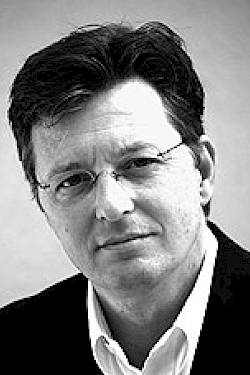
Jörg Zielinski,
Jörg Zielinski
Jörg Zielinskistammt aus Berlin und lebt seit 1991 in der Schweiz. Seine Ausbildung und sein Studium absolvierte er in Berlin, Basel und Zürich. Seine Produktionsleitung am Theater Basel und seine leitende Mitarbeit bei «The Really Useful Group» brachten ihm Erfahrungen mit internationalen Theaterproduktionen. Er arbeitete an der Expo.02 in Yverdon-les-Bains sowie bei der Rauminszenierung Hotel Offen in Baden mit. Seine Designerfahrungen sammelte er bei Vitra. Als Leiter des Ausstattungswesens am Opernhaus Zürich arbeitete er mit dem Shanghai Opera House zusammen. Aus dieser Zusammenarbeit entstanden Kontakte mit der National Academy of Chinese Theatre Arts in Peking und der Zürcher Hochschule der Künste, wo er zu Vorträgen eingeladen wurde. Im Rahmen eines Masterstudiums hält Jörg Zielinski Vorträge an der Hochschule der Künste Bern. Er entwirft und realisiert Bühnenbilder und szenische Einrichtungen. Es entstanden Entwürfe für das Opernhaus Zürich, das Zürcher Kammerorchester, das Londoner Studio «United Visual Artists» und diverse freie Projekte. Seine Fotos wurden international publiziert und ausgestellt.
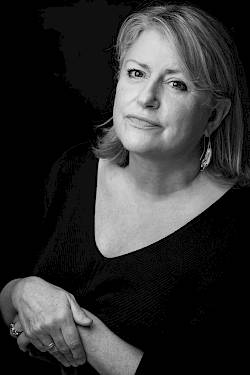
Emma Ryott,
Emma Ryott
Emma Ryott trained at Trent Polytechnic with a BA in Theatre Design. Ever since their first collaboration in 2003, Emma Ryott and Christian Spuck continued working together for ballet and opera productions, such as Lulu. Eine Monstretragödie in Stuttgart, Anna Karenina in Zurich, Oslo and Moscow, Romeo und Julia in Zurich, Woyzeck in Oslo and Zurich, Das Fräulein von S. in Stuttgart, Leonce und Lena in Montréal, Stuttgart und Zurich, Der Sandmann in Stuttgart und Zurich, Poppea / Poppea und Don Q. for Gauthier Dance, The Return of Ulysses for das Royal Ballet of Flanders, La Damnation de Faust at the Deutsche Oper Berlin, Falstaff in Wiesbaden and Orfeo ed Euridice in Stuttgart. She also works closely with director Keith Warner. Their collaborations include Mathis der Maler at Theater an der Wien, Manon Lescaut at the English National Opera as well as La Damnation de Faust and Harbison’s The Great Gatsby at the Semperoper Dresden. Other designs were created for Sunset Boulevard and Manon Lescaut (Goteborg), Otello (Salzburg), The Heart of Robin Hood for the Royal Shakespeare Company (awarded with Elliot Norton Award for outstanding design), Rock ‘n Roll by Tom Stoppard (London Royal Court, West End and Broadway), Chekhov-trilogy directed by Jonathan Kent (National Theatre, London) and the New Year’s Day Concert, Vienna, 2016.
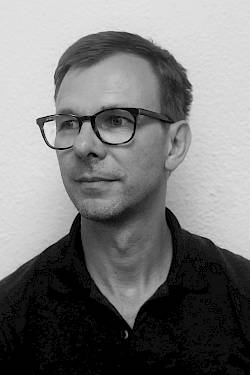
Martin Gebhardt,
Martin Gebhardt
Martin Gebhardt war Lichtgestalter und Beleuchtungsmeister bei John Neumeiers Hamburg Ballett. Ab 2002 arbeitete er mit Heinz Spoerli und dem Ballett Zürich zusammen. Ballettproduktionen der beiden Compagnien führten ihn an renommierte Theater in Europa, Asien und Amerika. Am Opernhaus Zürich schuf er das Lichtdesign für Inszenierungen von Jürgen Flimm, Grischa Asagaroff, Matthias Hartmann, David Pountney, Moshe Leiser/Patrice Caurier, Damiano Michieletto und Achim Freyer. Bei den Salzburger Festspielen kreierte er die Lichtgestaltung für La bohème und eine Neufassung von Spoerlis Der Tod und das Mädchen. Seit der Spielzeit 2012/13 ist Martin Gebhardt Leiter der Beleuchtung am Opernhaus Zürich. Eine enge Zusammenarbeit verbindet ihn heute mit dem Choreografen Christian Spuck (u. a. Winterreise, Nussknacker und Mausekönig, Messa da Requiem, Anna Karenina, Woyzeck, Der Sandmann, Leonce und Lena, Das Mädchen mit den Schwefelhölzern, Dornröschen). Er war ausserdem Lichtdesigner für die Choreografen Edward Clug (u.a. Strings, Le Sacre du printemps und Faust in Zürich; Petruschka am Moskauer Bolschoitheater), Alexei Ratmansky, Wayne McGregor, Marco Goecke und Douglas Lee. Mit Christoph Marthaler und Anna Viebrock arbeitete er beim Händel-Abend Sale, Rossinis Il viaggio a Reims und Glucks Orfeo ed Euridice in Zürich sowie bei Lulu an der Hamburgischen Staatsoper. 2020 gestaltete er das Licht an der Oper Genf für Les Huguenots in der Regie von Jossi Wieler und Sergio Morabito. 2021 folgte Christian Spucks Orlando am Moskauer Bolschoitheater und 2022 Don Giovanni am New National Theatre Toyko.
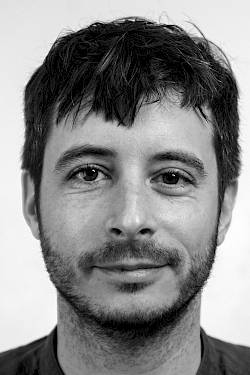
Tieni Burkhalter,
Tieni Burkhalter
Tieni Burkhalter studierte Bildende Kunst an der Zürcher Hochschule der Künste (ZHdK), wo er sich auf Video und Videoinstallation spezialisierte. Seine Werke wurden sowohl an Ausstellungen als auch an Experimentalfilmfestivals, u. a. der Videoex in Zürich und der Biennale de l’image en mouvement in Genf, gezeigt. Daneben war er als freier Mitarbeiter für das Schweizer Fernsehen sowie für verschiedene Filmagenturen als Kameramann und Ausstatter tätig und unterstützt bis heute zahlreiche Zürcher Galerien in Zusammenarbeit mit ihren Künstler:innen. Seit 2009 ist er als Videoproduzent für die Bühne tätig: Am Opernhaus Zürich waren seine Arbeiten bisher Teil von Der fliegende Holländer und Land des Lächelns (Andreas Homoki), A-Life (Choreografie: Douglas Lee), Anna Karenina und Das Mädchen mit den Schwefelhölzern (Christian Spuck), Pelléas et Mélisande und Die Sache Makropulos (Dmitri Tcherniakov), Faust (Edward Clug), Coraline (Nina Russi), Il trovatore (Adele Thomas) und Die Odyssee (Rainer Holzapfel). Für Dmitri Tcherniakov produzierte er ferner das Videodesign für Senza Sangue /Herzog Blaubarts Burg an der Staatsoper Hamburg, La Fille de Neige und Les Troyens an der Opéra National de Paris und Tristan und Isolde an der Staatsoper Unter den Linden in Berlin.
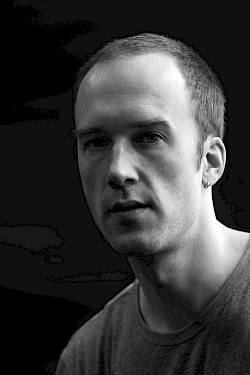
Martin Donner,
Martin Donner
Martin Donner, Jahrgang 1974, ist seit Mitte der neunziger Jahre als Komponist, Produzent und Musiker tätig. Musikalisch vielseitig interessiert, arbeitet er seit 2000 als freischaffender Künstler in verschiedenen Projekten und Formationen. Dabei setzte er sich intensiv mit der Ästhetik und Produktion elektronischer Musik auseinander. In Kooperation mit der Agentur «Publikmacher» baute er ein digitales Klangarchiv für das Internet auf und war von 2001-2003 Dozent für Audioproduktion an der Medienwerkstatt Stuttgart. Seit 2002 komponiert er regelmässig Musik für verschiedene internationale Theater und Tanzkompanien. Dabei arbeitete er mit Christian Spuck, Rene Pollesch und Hans Kresnik zusammen. Von 2004 bis 2010 lebte Donner in Berlin, wo er einem fortbildenden Studium der Kultur- und Medienwissenschaften an der Humboldt Universität nachging. In Folge entstanden neben seiner Musik auch theoretische Texte und Klanginstallationen. Seit 2010 lebt Donner wieder in Stuttgart.
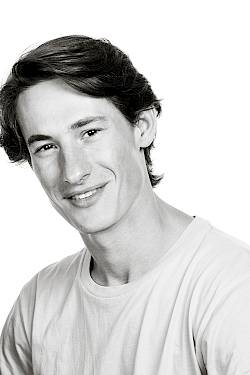
Alexander Jones,
Alexander Jones
Alexander Jones comes from Great Britain. He received his dance training at the Royal Ballet School in London. In 2004 he won the gold medal in the Adeline Genée Competition and the Dame Ninette de Valois Prize. In the 2005/06 season he became a member of the Stuttgart Ballet, where he was appointed principal dancer in 2011/12. In Stuttgart he has appeared as Armand Duval in Neumeier’s Kameliendame, Romeo in Cranko’s Romeo und Julia, in the title roles of Cranko’s Onegin and Kevin O’Days Hamlet, as Basilio in Maximiliano Guerra’s Don Quixote and in MacMillan’s Lied von der Erde. He has also danced in choreographies by Balanchine, Robbins, Ashton, Schaufuss, Tetley, Béjart, Haydée, van Manen, Forsythe, Lee, McGregor, Clug, and Spuck. Alexander Jones has been a first soloist of Ballett Zürich since the 2015/16 season. Here he has danced Prince Siegfried in Alexei Ratmansky’s Schwanensee reconstruction, Albrecht in Patrice Bart’s Giselle and Romeo in Romeo und Julia, Nathanael in Der Sandmann and Vronsky in Anna Karenina (all by Christian Spuck), among others.

Katja Wünsche,
Katja Wünsche
Katja Wünsche comes from Dresden and was trained at the Staatliche Ballettschule Berlin. She has won prizes at numerous ballet competitions. From 1999 to 2012 she danced in the Stuttgart Ballet, including as a principal dance from 2006. She danced leading roles in choreographies by John Cranko (Romeo und Julia, Der Widerspenstigen Zähmung, Onegin), John Neumeier (Endstation Sehnsucht, Die Kameliendame), Marcia Haydée (Dornröschen, La Sylphide, La fille mal gardée) and Christian Spuck (Lulu, Der Sandmann, Leonce und Lena, Das Fräulein von S.) and ballets by Forsythe, Kylián, León/Lightfoot and Goecke. In 2007 she was awarded the German Dance Prize Future (for promising young artists) and the German Theater Prize Der Faust. Katja Wünsche has been a first soloist with Ballett Zürich since the 2012/13 season. She has been seen in Zurich as Julia in Spuck’s Romeo und Julia, Lena in Leonce und Lena, Marie in Woyzeck, Anna Karenina and Kitty in Anna Karenina and Clara in Der Sandmann. She has also performed in choreographies by Sol León/Paul Lightfoot, Douglas Lee, Martin Schläpfer, Wayne McGregor and Marco Goecke. In 2014 she was awarded the «Tanzpreis der Freunde des Balletts Zürich».
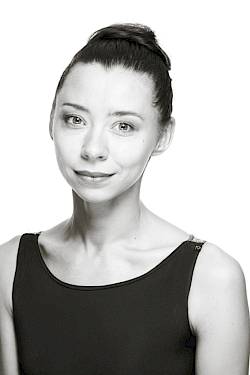
Anna Khamzina,
Anna Khamzina
Anna Khamzina comes from Russia and received her dance education at the Natalia Trishina and Yuly Medvedev School of Classic Dance. She was a principal dancer at the Stanislavsky and Nemirovich-Danchenko Moscow Academic Music Theater in Moscow, where she appeared as Giselle, in the title role of John Neumeier's Die kleine Meerjungfrau (for which she was awarded the Golden Mask Theater Prize), as well as in Vladimir Burmeister's Schwanensee and La Esmeralda, Dmitry Bryantsev's Illusive Ball and Pierre Lacotte’s La Sylphide. She has also worked with choreographers such as Jiří Kylián, Jorma Elo and Nacho Duato. From 2013 to 2015 she danced at the Aalto Ballet Theater Essen. There she was seen as the Good Fairy (Cinderella), Titania (Ein Sommernachtstraum) and Giselle (David Dawson). She has been a member of the Ballett Zürich since the 2015/16 season. She has appeared as Odette/Odile in Alexei Ratmansky's Schwanensee reconstruction, as Olympia in Christian Spuck's Der Sandmann, in Forsythe's Quintett and Godani’s rituals from another when, as well as in the title role of Christian Spuck's Anna Karenina.
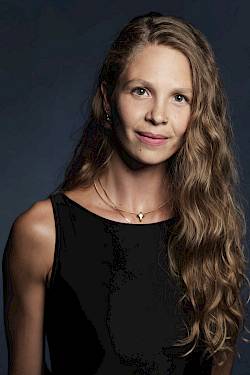
Francesca Dell'Aria,
Francesca Dell'Aria
Francesca Dell’Aria comes from Italy. She received her training at the Elmhurst School and the Birmingham Royal Ballet. After an engagement with the Slovak National Ballet, she was a member of the Bayerisches Staatsballett from 2010 to 2014. She has belonged to Ballett Zürich since the 2014/15 season and has appeared in choreographies by William Forsythe (New Sleep, workwithinwork, In the middle, The Second Detail), Jiří Kylián (Gods and Dogs, Falling Angels), George Balanchine, Hans van Manen (Kammerballett) Jacopo Godani, Douglas Lee, Edward Clug, Marco Goecke (Nijinski), and Crystal Pite. She also appeared in the title role of Christian Spuck’s Anna Karenina and as Myrtha in Patrice Bart’s Giselle. She was awarded with the «Tanzpreis der Freunde des Balletts Zürich» in 2019.
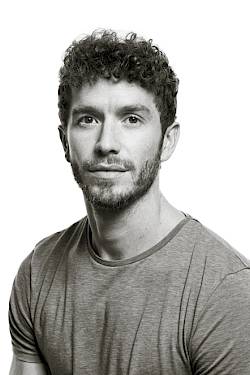
William Moore,
William Moore
William Moore is British and studied at the Royal Ballet School in London. He has won prizes at international ballet competitions. He has belonged to the Stuttgart Ballet since 2005 and was appointed as principal dancer there in 2010. Important roles were Siegfried in Schwanensee, Lensky in Onegin and Lucentio in Der Widerspenstigen Zähmung (all by John Cranko), Armand in Neumeier’s Kameliendame, Leonce in Christian Spuck’s Leonce und Lena, the title role in Marco Goecke’s Orlando, Albrecht in Giselle by Anderson/Savina, Colas in Ashton’s La fille mal gardée. In 2012 William Moore was awarded the German Theater Prize «Der Faust». Since the 2012/13 season he has been first soloist with Ballett Zürich. Important roles include Romeo in Spuck’s Romeo und Julia, Vronsky in Anna Karenina, the Nutcracker in Spuck’s Nussknacker und Mausekönig, Mephisto in Faust by Edward Clug, Petruschka in the choreography by Marco Goecke, and Diaghilev in Goecke’s Nijinski. He has also appeared in pieces by Wayne McGregor, Sol León/Paul Lightfoot, Douglas Lee, and Jiří Kylián. In 2018 he received the «Tanzpreis der Freunde des Balletts Zürich».
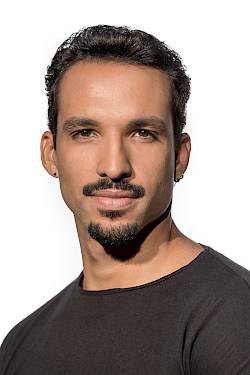
Cristian Alex Assis,
Cristian Alex Assis
Cristian Alex Assis is a native of Brazil. He studied at the Mannheim University of Music and Performing Arts, on a scholarship awarded by the Brasilia International Dance Seminar. He was a member of the Munich-based Bavarian State Ballet from 2010 to 2012, and came to Ballett Zürich for the 2012/13 season. Since then he has been seen in various roles including Wronski in Christian Spuck’s Anna Karenina, Tybalt in Spuck’s Romeo and Juliet and the drum major and the captain in Spuck’s Woyzeck, in further choreographies by William Forsythe andEdward Clug and in Martin Schläpfer’s Forellenquintett. In the reconstruction of Swan Lake by Alexei Ratmansky he was seen as Rotbart.
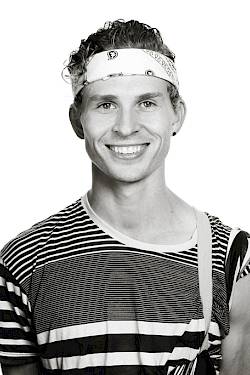
Tars Vandebeek,
Tars Vandebeek
Tars Vandebeek was born in Belgium, and studied at the Royal Ballet School of Antwerp. He won a gold medal at the International Competition of Dance in Biarritz, also earning the Biarritz City Award, and went on to perform for the Cannes Jeune Ballet and Gauthier Dance. After one year with the Junior Ballet, he joined the main company for the season 2014/15. He has already made a number of appearances on the Zurich stage, such as in Marco Goecke’s Deer Vision and as Levin in Christian Spuck’s Anna Karenina; and he danced the title role in Spuck’s Woyzeck.
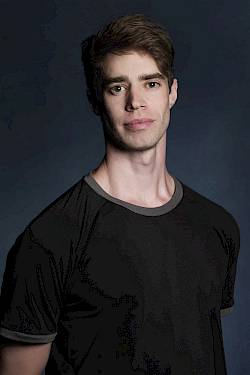
Jesse Fraser,
Jesse Fraser
Jesse Fraser was born in Saskatoon, Canada. He trained at the Royal Winnipeg Ballet School and became a member of the Stuttgart Ballet with the 2010/11 season. There he danced in choreographies by Cranko, MacMillan, Spuck, Haydée, Neumeier, Béjart, Forsythe, Cherkaoui, Goecke, Clug, Volpi, and Stiens. He created the choreographies Back and Forth and Second Self(ie) as a part of the «Young Choreographers» of the Noverre Society series. He has been a member of Ballett Zürich since the 2015/16 season. He has appeared as Paris in Christian Spuck’s Romeo und Julia, as Levin in Spuck’s Anna Karenina, as Hilarion in Patrice Bart’s Giselle, in Marco Goecke’s Petruschka and in choreographies by Jacopo Godani, Jiří Kylián, Hans van Manen, and Crystal Pite. In the 2019/20 season he appeared in Forsythe’s The Second Detail.
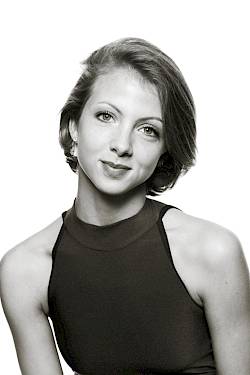
Michelle Willems,
Michelle Willems
Michelle Willems is French. She studied at the Bolshoi Ballet Academy and at the Atelier Rudra-Béjart in Lausanne. After two seasons with the Junior Ballett, she joined Ballett Zürich in the 2016/17 season. After solo roles in Giselle and Schwanensee, she danced Kitty in Christian Spuck’s Anna Karenina, Marie in Spuck’s Nussknacker und Mausekönig and Gretchen in Edward Clug’s Faust, and in Spuck’s Das Mädchen mit den Schwefelhölzern. She has also appeared in choreographies by William Forsythe, Jiří Kylián, Marco Goecke, Crystal Pite, George Balanchine, Ohad Naharin, Douglas Lee, and Filipe Portugal She was awarded the «Tanzpreis der Freunde des Balletts Zürich» in 2018.
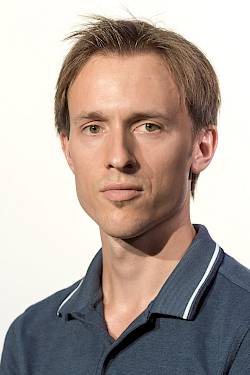
Dmitry Khamzin,
Dmitry Khamzin
Dmitry Khamzin is from Russia. After training at the Perm Ballet School, he performed as a soloist for the Stanislavsky & Nemirovich-Danchenko Musical Theatre in Moscow, where he danced leading roles in choreographies by John Neumeier (The Seagull and The Little Mermaid), Coralli/Petipa (Albrecht in Giselle), Pierre Lacotte (James in La Sylphide), August Bournonville (Gennaro in Napoli), Vasily Vainonen (the prince in The Nutcracker) and Vladimir Burmeister (Swan Lake). He has also appeared in choreographies by Jiří Kylián, Nacho Duato and Jorma Elo. He has twice been nominated for the “Golden Mask” theatre award. After performing with Aalto Ballett Essen from 2013 to 2015, he has joined Ballett Zürich for the 2015/16 season. He has been seen as Spalanzani in Christian Spuck’s Der Sandmann and presented his choreography Work Space as part of the company’s Young Choreographers programme.

Daniel Mulligan,
Daniel Mulligan
Daniel Mulligan comes from Great Britain and studied at the Royal Ballet School in London. After two seasons with the Junior Ballett, he joined Ballett Zürich in the 2009/10 season. He has appeared as a soloist in many of Heinz Spoerli’s choreographies. He danced Mercutio/Benvolio in Christian Spuck’s Romeo und Julia as well as in ballets by Mats Ek (Dornröschen), Hans van Manen (Solo, Kammerballett), Edward Clug (Chamber Minds, Le Sacre du printemps), Sol León/Paul Lightfoot (Skew-Whiff, Speak for Yourself), William Forsythe (Quintett), Jiří Kylián (Gods and Dogs, Stepping Stones, Sweet Dreams), Ohad Naharin (Minus 16), Marco Goecke (Petruschka), Filipe Portugal (Corpus), Douglas Lee, and Crystal Pite. Recent leading roles have included Mephisto in Faust by Edward Clug, Fritz and the Clown in Spuck’s Nussknacker und Mausekönig, as well as Stiva in Spuck’s Anna Karenina.
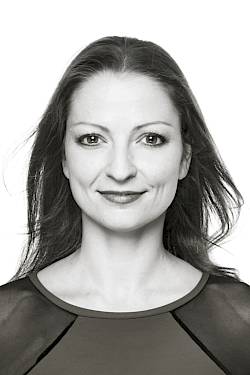
Galina Mihaylova,
Galina Mihaylova
The Bulgarian dancer Galina Mihaylova completed her education at the Bulgarian State Choreographic School and the Swiss Professional Ballet School, where she was a Nureyev Foundation scholarship holder. In the 1999/2000 season she became a member of the Ballett Zürich. She danced here in numerous choreographies by Heinz Spoerli. She has appeared as Effie (La Sylphide), Amor (Don Quixote), Helena (A Midsummer Night’s Dream), in Wäre heute morgen und gestern jetzt, as Odette/Odile (Swan Lake) and Henriette (Raymonda). She has also performed in ballets by William Forsythe, Jiří Kylián, Twyla Tharp, Uwe Scholz, and Jiří Bubeniček. She danced the Nurse in Romeo and Juliet, Margret in Woyzeck and Dolly in Anna Karenina (all by Christian Spuck). She has also appeared in choreographies by Wayne McGregor, Marco Goecke, and George Balanchine.
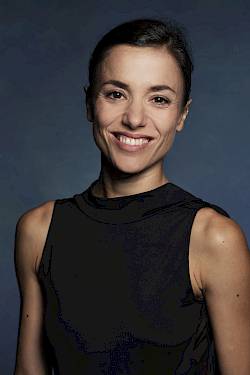
Giulia Tonelli,
Giulia Tonelli
Giulia Tonelli comes from Italy. She graduated from the Balletto di Toscana and the Ballet School of the Vienna State Opera. After her first engagement at the Vienna State Opera, she danced from 2002 to 2010 with the Royal Ballet of Flanders in Antwerp and from 2004 as a demi-soloist. There she danced Giselle (Petipa) as well as solo roles in choreographies of Forsythe, Balanchine, Kylián, Haydée and Spuck. She has been a member of Ballett Zürich since the 2010/11 season, where she has performed ballets by Spoerli, Goecke, McGregor, Lee, Forsythe, Kylián and Balanchine. She danced Julia in Christian Spuck’s Romeo und Julia, Lena in Spuck’s Leonce und Lena and Betsy in Anna Karenina. In Alexei Ratmansky’s Schwanensee reconstruction she danced in the Pas de trois and she also performed in Forsythe’s Quintett and Spuck’s Messa da Requiem. Last season’s highlights include Emergence by Crystal Pite and Gretchen in Edward Clug’s Faust. During the «Junge Choreografen» series she presented the works Mind Games and Klastos together with Mélissa Ligurgo. In 2013 she was awarded the Giuliana Penzi Prize. In 2017 she received the «Tanzpreis der Freunde des Balletts Zürich».

Chinatsu Sugishima,
Chinatsu Sugishima
Chinatsu Sugishima is Japanese. She studied at the Reika Otsuka Ballet Studio in Tokyo and at Munich’s Ballet Academy, and won second prize at the National Dance Competition in Saitama, Japan. She danced as a trainee with the Bavarian State Ballet; and after a year with the Junior Ballet, she joined the main Ballett Zürich company for the season 2014/15. She has been seen in Forsythe’s In the Middle, Somewhat Elevated and in the Peasants’ Pas de deux of Giselle.
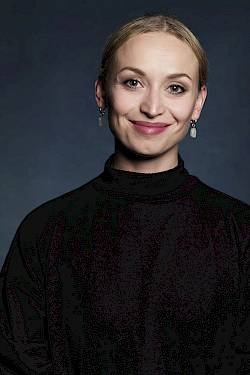
Irmina Kopaczynska,
Irmina Kopaczynska
Irmina Kopaczynska was born in Poland. She studied at the Polish National Ballet School Poznan. She won several prizes in the Polish National Ballet Competition. She also took part in the «Premio Roma» and the «Prix de Lausanne». After two seasons with the Junior Ballett, she became a member of Ballett Zürich starting with the 2011/12 season. She danced the Silver Fairy in Mats Ek’s Dornröschen, Betsy in Christian Spuck’s Anna Karenina, and the Nursemaid in Spuck’s Romeo und Julia. She has also appeared in choreographies by William Forsythe (In the middle, New Sleep), Hans van Manen (Kammerballett), Jiří Kylián (Gods and Dogs, Bella Figura), Iacopo Godani, Edward Clug, Marco Goecke (including the Mother in Nijinski), Douglas Lee, and Crystal Pite.

Wei Chen,
Wei Chen
Wei Chen comes from the USA and received his education at the Boston Ballet School, the Margo Marshall School of Ballet, the Walnut Hill School, and the Houston Ballet’s Ben Stevenson Academy. At the Royal Ballet of Flanders he danced in Marcia Haydées Schwanensee (Siegfried) and Dornröschen (Prince Desiré) as well as in Cranko’s Onegin (Lensky). He has also appeared in choreographies by Balanchine, Bournonville, Dawson, Forsythe, Godani, McGregor, Nureyev, Pite, Stevenson, and Wheeldon. He has been a member of Ballett Zürich since the 2013/14 season and has performed in choreographies by Douglas Lee, Jiří Kylián, Marco Goecke, Edward Clug, William Forsythe, and Crystal Pite, among others. He also danced Romeo and Mercutio in Spuck’s Romeo und Julia, Benno in Ratmansky’s Schwanensee, Coppelius in Spuck’s Der Sandmann, and Albrecht in Patrice Bart’s Giselle.
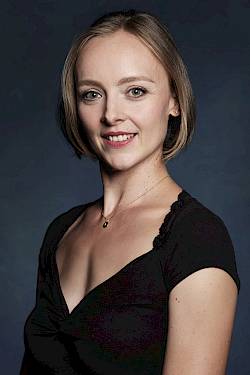
Mélanie Borel,
Mélanie Borel
Mélanie Borel comes from France. She studied at the École Nationale Supérieure de Danse in Marseille and at the École de Danse de l’Opéra de Paris. Engagements have taken her to the Ballet de l’Opéra National de Bordeaux and, from 2005 to 2008, to the Peter Schaufuss Ballet in Denmark. She has been a member of Ballett Zürich since the 2008/09 season and has performed as a soloist in choreographies by Twyla Tharp, Heinz Spoerli, and Mats Ek. She was the Haushofmeister in Spuck’s Leonce und Lena and danced the «Cholerisch» variation in Balanchine’s The Four Temperaments. In addition, she has appeared in choreographies by Marco Goecke, Douglas Lee, Jiří Kylián, Wayne McGregor, Martin Schläpfer, Hans van Manen, Edward Clug and Crystal Pite.
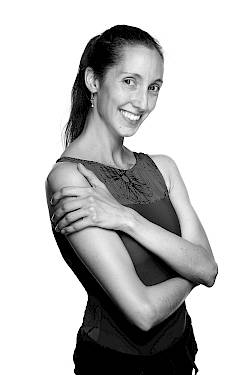
Alba Sempere Torres,
Alba Sempere Torres
Alba Sempere Torres is Spanish. She trained at the Institut del Teatro in Barcelona and at the John Cranko School in Stuttgart. She won the Castellón Ballet Competition and danced with the Vienna State Opera Ballet, the Staatsballett Berlin and, from 2004 to 2008 with the Bayerisches Staatsballett. She has appeared in choreographies by Jo Strømgren, Peter Wright, Jiří Kylián, Vladimir Malakhov, John Neumeier and Mats Ek, among others. She has belonged to Ballett Zürich since the 2014/15 season, where she has been seen in choreographies by Jiří Kylián, Hans van Manen, George Balanchine, Patrice Bart, Martin Schläpfer, and Christian Spuck.
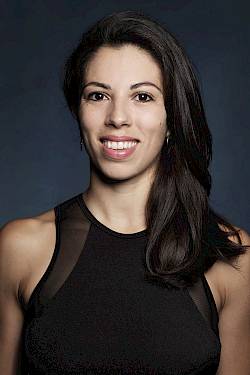
Constanza Perotta Altube,
Constanza Perotta Altube
Italian-Argentinian dancer Constanza Perotta Altube studied at the Instituto Superior de Arte del Teatro Colón in Buenos Aires and at the La Scala Ballet School in Milan. After her first engagements in the ballet of the Teatro Colón and the Victor Ullate Ballet in Madrid, she joined Ballett Zürich in the 2009/10 season. Here she appeared in choreographies by Christian Spuck (including the Snow Queen in Nussknacker und Mausekönig), Marco Goecke (Nijinski), Patrice Bart (Myrtha in Giselle), Mats Ek, Iacopo Godani, Hans van Manen, Jiří Kylián, Edward Clug, Mats Ek, Crystal Pite, Ohad Naharin, Alexei Ratmansky, and William Forsythe.
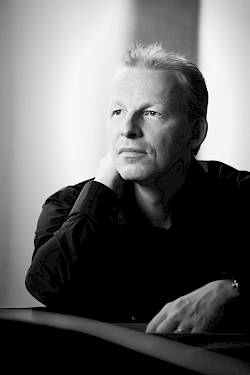
Adrian Oetiker,
Adrian Oetiker
Der Schweizer Pianist Adrian Oetiker verfolgt seit vielen Jahren eine weltweite Karriere. Er studierte er in der Meisterklasse von Homero Francesch an der Zürcher Hochschule der Künste und bei Bella Davidovich an der Juilliard School in New York. Auch Lazar Berman zählte zu seinen Lehrern. 1995 gewann er den ARD-Wettbewerb in München. Konzerte in Europa, Amerika und Australien führten ihn mit vielen Orchestern zusammen, darunter das Tonhalle-Orchester Zürich, das Symphonie-Orchester des Bayerischen Rundfunks, die Staatskapelle Dresden, das Irish National Symphony Orchestra und das Melbourne Symphony Orchestra. Bei wiederholten Einladungen nach Australien trat er mit den meisten Orchestern des Kontinents auf. Mit dem Orchestre Symphonique de Mulhouse unter Daniel Klajner spielte er von 2006 bis 2008 alle Klavierkonzerte von Béla Bartók. Rezitals und Kammermusik-Programme spielte er u.a. in der Berliner Philharmonie, im Gewandhaus Leipzig, im Festspielhaus Salzburg, im KKL und im Teatro La Fenice in Venedig. Er musiziert regelmässig im Klavierduo Paola & Adrian Oetiker und ist Pianist im Feininger Trio der Berliner Philharmoniker. Mehrere Ballettproduktionen am Opernhaus Zürich, an der Semperoper Dresden, an der Bayerischen Staatsoper und an der Deutschen Oper Berlin, u.a. mit Christian Spuck, runden seine vielfältigen Tätigkeiten ab. Adrian Oetiker ist Künstlerischer Leiter der Internationalen Sommerakademie Ettal und war von 1996 bis 2021 Professor für Klavier an der Hochschule für Musik Basel. 2011 wurde er als Professor an die Hochschule für Musik und Theater in München berufen.



